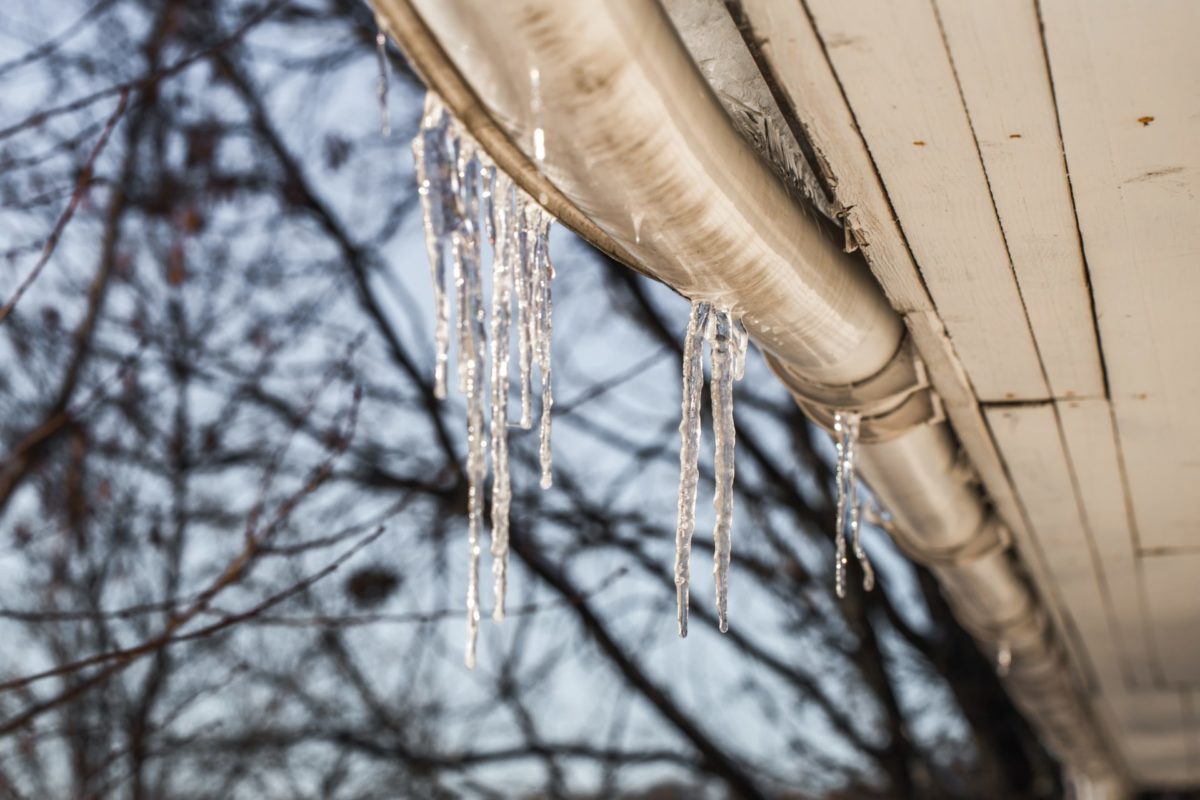Roof Prepping Before the Winter Months

Posted on October 22, 2022 by Phillip Camerer
Fall time is when days get shorter, and temperatures begin to cool—signaling homeowners to complete those outdoor Fall chores.
If you’re a homeowner, you know, Fall is a critical time to complete roof prepping ahead of those winter months. There’s no better defense against roof damage than these top fortifying roof tasks:
- Attic assessment
- Exterior Roof Inspection
- Inspect and clean gutters
- Tree trimming
Attic Assessment
Once annually, you can conduct a self-inspection of your home’s roof. To begin, work from the inside-out, starting in your attic—a commonly overlooked area when completing a roof inspection.
The first thing you’ll want to do is measure the depth of insulation in your attic. If there is not enough insulation in your attic, you may be looking at two problems areas:
- Costly energy bills
- Ice damming
If your energy bill this winter is excessively high, it can lead to unwanted heat buildup beneath your shingles. When that happens, heat gets trapped in a home’s attic space and begins to build and seep through the porous framing of your roof. Then it gets trapped beneath your shingles.
Ice dams form when a gutter gets flooded by snowmelt. The water in it freezes before it has time to adequately drain off, leading to the formation of icicles that can weigh down the eaves of your roof. Eventually, the trapped water begins to soak through to your home’s roof and into the insulation, leading to additional interior damage to your home.
Exterior Roof Inspection
Still working on the premise of inside-out, move to the roof of your home. You’ll begin by checking areas where flashing gets used. Commonly found where a roof line meets a vertical headwall (a.k.a., front wall) and a vertical sidewall. Also, check these other common areas where flashing gets used.
- Low spots, called roof valleys, where two or more roof slopes meet
- Roof openings are also known as roof apertures or protrusions (i.e., chimneys, venting, skylights)
- Inspect the entire perimeter of the roof’s edge, including the gables, fascia, and eave
When completing a self-inspection of your roof, you should look for any flashing or shingles that are curling or popped loose. These areas will need repair before the winter months.
Inspect and Clean Gutters
By working inside-out to inspect your home’s roof, you leave no area uninspected. As seen with the last step, your final inspection area is the roof perimeter. Along the roof perimeter will be your gutters.
Here, you will look for any ill-fitting gutters that are loose, falling, cluttered, or clogged with debris. Snowmelt needs to move freely through gutter channels before nightfall throughout the winter because days are shorter, and temperatures can sometimes reach freezing by dusk.
Tree Trimming
Finally, your last inside-out step is to inspect and label tree limbs for trimming mature trees outside your home. You want to cut any overhanging limbs or heavy branches stretching over your home’s roof.
Make sure to do that before the first snowfall. Those branches can get weighted down heavily and snap, falling onto your roof, weighting it down further, or worse, puncturing your roof, forcing you to file an insurance claim.
When to Contact A Roofing Contractor
If you’re not comfortable or unable to inspect your home’s roof this Fall, contact the team at Phillip Camerer Roofing today at (417) 451-5479. Their hours of operation are Monday through Friday, 9:00 AM to 5:00 PM central time.
You can also request an online quote for a roof inspection before the first snowfall.
